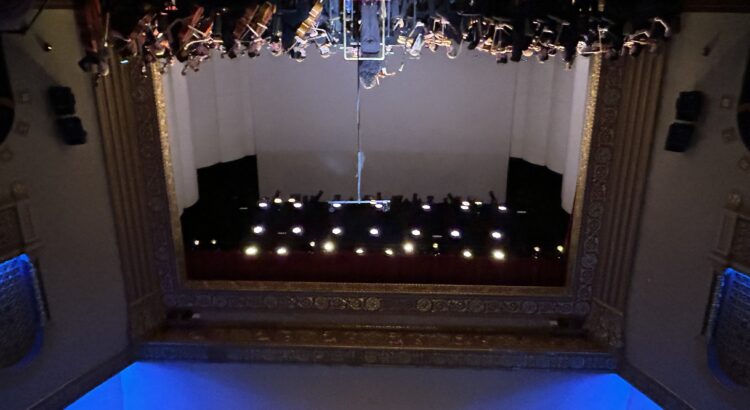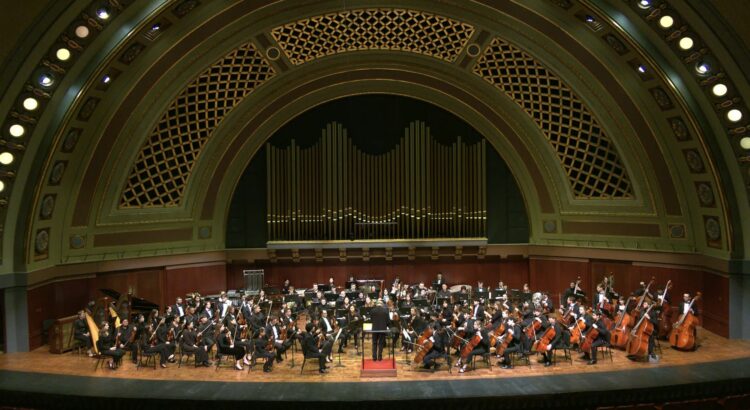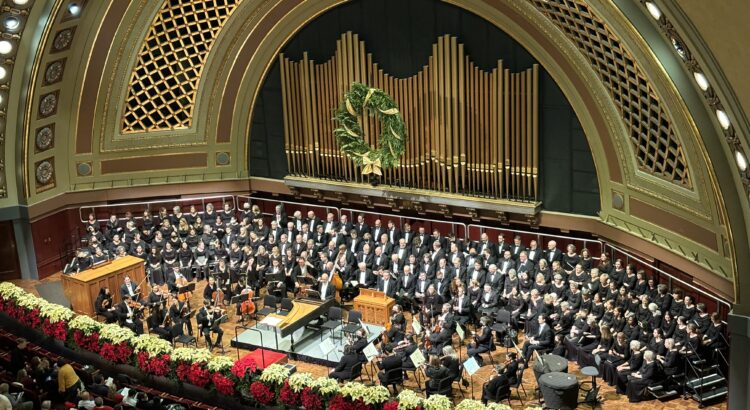Photos are provided by Peter Smith Photography
On October 18th, the London Philharmonic returned to Hill Auditorium after 13 years. The concert was especially thrilling for me, as it was my first time experiencing the London Philharmonic live. The repertoire, performed in order, included Britten’s Sinfonia de Requiem, Shostakovich’s Violin Concerto No. 1 in a minor, Tania León’s Raíces (Origins), and Sibelius’s Symphony No. 5 in E-flat Major.
I found it unusual that they chose to open with a requiem, given the somber, darker tones typically associated with such works. Yet Britten’s piece turned out to be grand in its own right, and I was surprised by how much I enjoyed listening to it. The quality of the music drew me in immediately, largely due to Edward Gardner’s conducting—I found my eyes fixed on him from the very beginning.
I consider the conductor to be the heart of an ensemble: the musicians move and breathe to the beat of the baton, and the phrasing of each lyrical line relies on the tiniest of gestures. A captivating conductor is vital to the quality of an orchestra’s performance, and Gardner’s skills truly shone, especially when every instrument joined in a musical passage. The contrasting dynamics filled the auditorium with a depth of sound that made me feel one with the Sinfonia de Requiem, despite being in the audience.
Although I had never heard Shostakovich’s first violin concerto before, the eerie dissonant intervals and unsettling lack of vibrato in the opening unmistakably evoked his distinctive melancholic style. Once the second movement began, the intensity of the piece immediately shifted my attention to violin soloist Patricia Kopatchinskaja. The clean harmonics and intonation of her double stops were breathtaking. Furthermore, she preserved Shostakovich’s voice by weaving between the lack of vibrato characteristic of the first movement and the vibrato that expressed her own musicality.

Like the preceding pieces, the introduction of Raíces was quieter and calm. What made it stand out from the rest of the program was the lively beat that picked up in the latter half; in this section, the woodwinds and brass melodies particularly shone, establishing themselves as the main characters of the piece.
Sibelius’s fifth symphony continued the trend of opening with a peaceful first movement, which made me hopeful for a triumphant ending to conclude the night. Instead of achieving an impactful ending by increasing the tempo, the last movement made its mark through the layering of instruments. The full volume of the brass rang beautifully through the hall, yet I could still hear the violins complimenting them with a gorgeous melody rich in luscious notes. The concluding measures were also unexpected; rather than maintaining that full sound, they transitioned into a series of single note chords played by the whole orchestra.
However, I must confess that for me the highlight of the concert was actually the encore: Variation IX, Adagio “Nimrod,” from Edward Elgar’s Enigma Variations. It was another calm piece, but rather than a somber sound, it featured sweet tones and a yearning melody that lingered with me long after the performance. It provided a perfect change of pace accompanied by a bittersweet emotion that proved to be more memorable than a loud and exciting ending.








